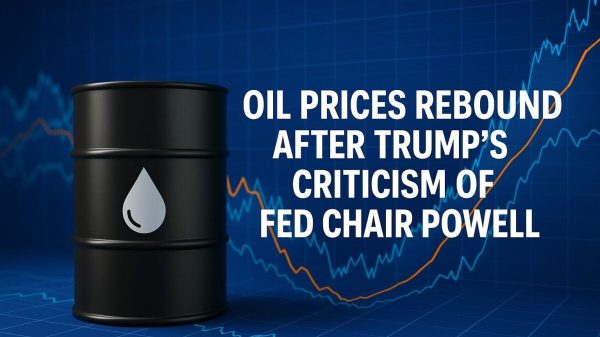Navigating the Turbulent Waters of Oil Drops
In the dynamic world of oil markets, recent developments have sent shockwaves throughout the industry. The phrase oil drops has become a focal point, reflecting the fragile equilibrium between global economic issues and geopolitical tensions in the Red Sea. Examining the current state of oil prices reveals a market engaged in a delicate balancing act, with traders considering potential supply disruptions against a backdrop of economic uncertainties.
Oil Prices: A Rollercoaster Ride Amidst Geopolitical Uncertainties
The past week saw oil prices surge by $2 following attacks on vessels in the Red Sea by Houthi rebels. The arrival of an Iranian warship further escalated concerns, fueling fears of broader conflicts that could affect crucial oil transportation routes. However, despite these geopolitical events, oil prices experienced a dip as optimism regarding early U.S. interest rate cuts waned. Suvro Sarkar, the energy sector team lead at DBS Bank, noted, “The geopolitical risks are not being priced in at the moment on the assumption that a regional flare-up will continue to be avoided.” This statement highlights the complex balance traders attempt to maintain between global events and economic indicators.
OPEC+ Dilemma: Cheap Oil Prices Pose a Challenge
Looking ahead to the first half of 2024, OPEC+ faces a dilemma. The expectation of an ample oil supply has tempered prices, causing concern within the alliance. The market remains volatile despite agreeing to voluntary cuts of 2.2 million barrels per day in the previous meeting. Kevin Wong, a senior market analyst at OANDA, suggests that OPEC+’s decision to hold an early February meeting reflects unease about the current weak market conditions. Cheapest oil might not be the panacea they hoped for, and the industry is preparing for potential strategy adjustments at the upcoming meeting.
Short-Term Projections: Sideways Movements and Inventory Reports
In the short term, the oil market is expected to show choppy yet generally subdued movement in the first quarter, contrasting with the more volatile second half of the previous year. Kevin Wong anticipates that WTI oil will likely trade between $68.90 and $72.30 a barrel, citing a lack of new catalysts. As the market awaits weekly U.S. crude and product inventory reports, analysts predict a decrease in crude stockpiles. At the same time, distillate and gasoline stocks are expected to rise. Upcoming data from the American Petroleum Institute and the Energy Information Administration will be key in determining the short-term direction of oil prices.
The Ebb and Flow of Oil Drops in a Global Landscape
The oil market is navigating the complex interplay of economic concerns and geopolitical tensions. The phrase oil drops aptly captures the market’s fragile state. As OPEC+ tackles the challenge of stabilising prices, traders operate in a market where the cheapest oil might not offer an immediate solution. In the weeks ahead, global events and economic indicators will each influence the unpredictable path of oil prices. In this intricate market dynamic, the term oil drops will remain relevant, encapsulating the nuanced challenges facing the global oil industry.
The post Navigating the Turbulent Waters of Oil Drops appeared first on FinanceBrokerage.

































